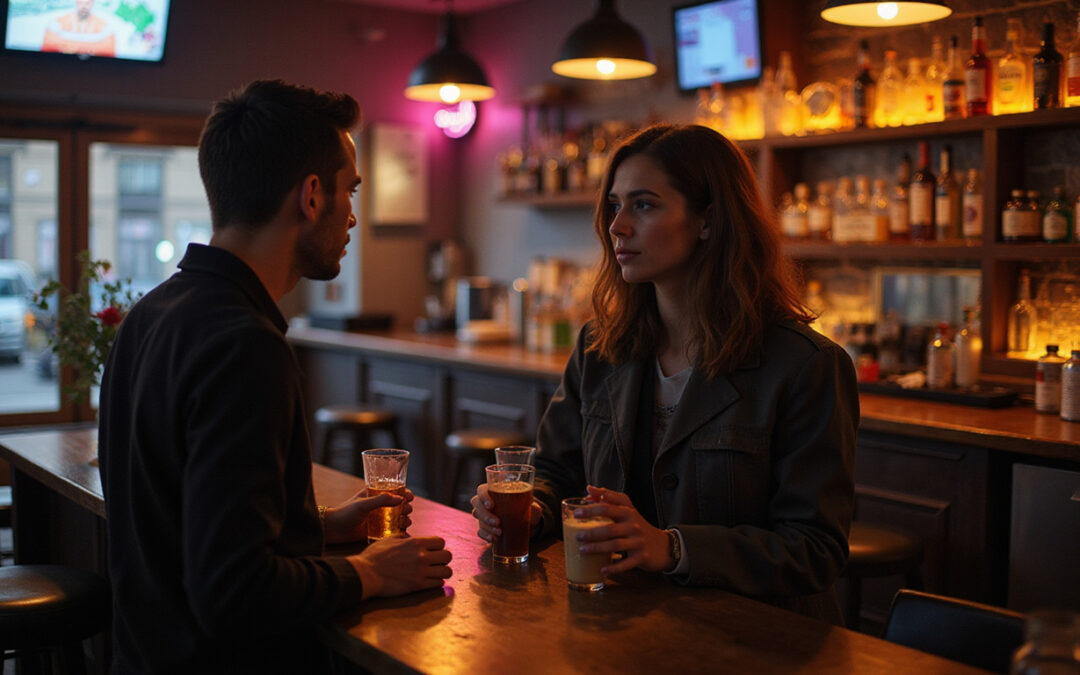Alcohol overservice hurts people, neighborhoods, and businesses. It poses risks that affect health, safety, and law. Understanding and spotting overservice helps bar owners, servers, and drinkers. This article shows the risks, signals, and practical steps that keep drinks safe.
What Is Alcohol Overservice?
Alcohol overservice means serving more alcohol than is safe or legal. Bars, restaurants, clubs, and parties can overserve guests. Overserving leads to intoxication and may cause accidents, fights, or health crises. Because overservice links to many harms, laws hold servers and venues responsible.
The National Institute on Alcohol Abuse and Alcoholism (NIAAA) says excessive serving spurs drunk driving and alcohol poisoning (source). Knowing these risks is the first step in stopping dangerous drinking.
Risks Associated with Alcohol Overservice
Overservice brings many risks beyond simple intoxication. These risks include:
- Drunk driving: Overserved guests may drive while impaired, risking lives.
- Health issues: Too much alcohol may cause poisoning and other severe conditions.
- Violence: Intoxication can trigger fights and unsafe behavior.
- Legal and financial trouble: Businesses may face lawsuits, fines, or lose liquor licenses.
- Social harm: Alcohol incidents harm family ties and community trust.
How to Identify Alcohol Overservice
Spotting overservice is key for those who serve and for fellow drinkers. Look out for these signals:
- Slurred speech and poor balance: When actions and words mix, it shows trouble.
- Aggressive or chatty moods: Loud or overly friendly behavior may signal excess.
- Odd mood or confusion: Sudden shifts in mood or clear disorientation warn of too much alcohol.
- Ignoring limits: Continuing to order despite clear signs is risky.
- Visible physical signs: Flushed skin, red eyes, nausea, or vomiting all hint at overservice.
Servers must learn these cues and act to protect everyone.
Preventing Alcohol Overservice: Best Practices for Bars and Restaurants
Stopping overservice needs clear policies, training, and smart tactics. These strategies help places run safer drinks:
1. Staff Training and Certification
Teach all staff to serve responsibly. Use Responsible Beverage Service (RBS) training to spot intoxication and say no when needed. Certification cuts legal risks and builds a safer scene.
2. Enforce Patron Limits and Monitor Consumption
Set clear drink limits for each guest. Use tabs or electronic checks to track orders and flag excess early.
3. Use Standard Drink Measurements
Measure drinks the same way each time. A standard size stops unintentional overpouring and overservice.
4. Encourage Food Consumption
Offer food with drinks. Eating slows alcohol absorption and cuts intoxication risk.
5. Have Clear Policies and Post Signage
Show your service rules where everyone can see them. Clear signs support staff choices and guide guest behavior.
6. Promote Alternative Transportation
Offer rideshare tips, designated driver options, or public transit info to lower drunk driving risks.
7. Foster a Supportive Environment
Create a culture where staff can step in safely. When guests see this, everyone respects the limits.
Role of Customers and Community in Preventing Overservice
Not only servers, but customers and their communities help stop overservice:
- Know your limits: Drink safely and know your tolerance.
- Watch over friends: Step in or ask for help when you see a friend in danger.
- Choose safe venues: Support places that care about responsible service.
- Demand fair laws: Urge local groups to enforce alcohol service rules.
Community education and outreach lower harms caused by too much alcohol.
Legal Implications of Alcohol Overservice
Many regions make it illegal to serve clearly intoxicated guests. These laws lead to penalties like:
- Fines or money judgments
- Blame for drunk driving crashes or injuries from overserved drinkers
- Lost or suspended liquor licenses
- Criminal charges when rules break repeatedly
Knowing these laws helps everyone in hospitality follow the rules.
Checklist for Preventing Alcohol Overservice in Your Venue
Use this checklist to cut overservice:
- Train all alcohol servers in responsible service.
- Watch each guest’s drink count with rules and systems.
- Measure each drink the same way.
- Offer food to slow down alcohol impact.
- Post clear signs about legal limits and rules.
- Allow staff to turn down service safely.
- Promote safe rides and public transport.
- Review and refresh your policies often.
Frequently Asked Questions (FAQ) About Alcohol Overservice
What is alcohol overservice, and why is it dangerous?
Overservice means giving a guest more alcohol than safe or legal. It increases the risk of accidents, health emergencies, legal problems, and unsafe behavior.
How can servers tell if someone is overserved?
They see slurred speech, poor coordination, mood changes, and physical signs like vomiting or flushed skin.
What are good ways to stop alcohol overservice in bars?
Good ways include training staff, checking drink limits, measuring drinks, serving food, posting clear rules, and promoting safe transport.
Final Thoughts
Alcohol overservice is a preventable harm. Servers, managers, guests, and community members must work together. Knowing the dangers and using smart prevention steps reduces risks. Responsible service protects health, boosts safety, and keeps businesses within the law. For more advice, see the National Institute on Alcohol Abuse and Alcoholism or local regulatory bodies.

By taking careful steps, any venue can build a safe and friendly drinking space.


